
Published: 14/06/2024
Updated: 21/06/2024
The Friends of Friendless Churches looks after more than 60 redundant churches and chapels in England and Wales, many of which have retained their bells — the oldest dating from the 12th century. In this Story, we’ll take a look at some of our most interesting and important historic church bells.
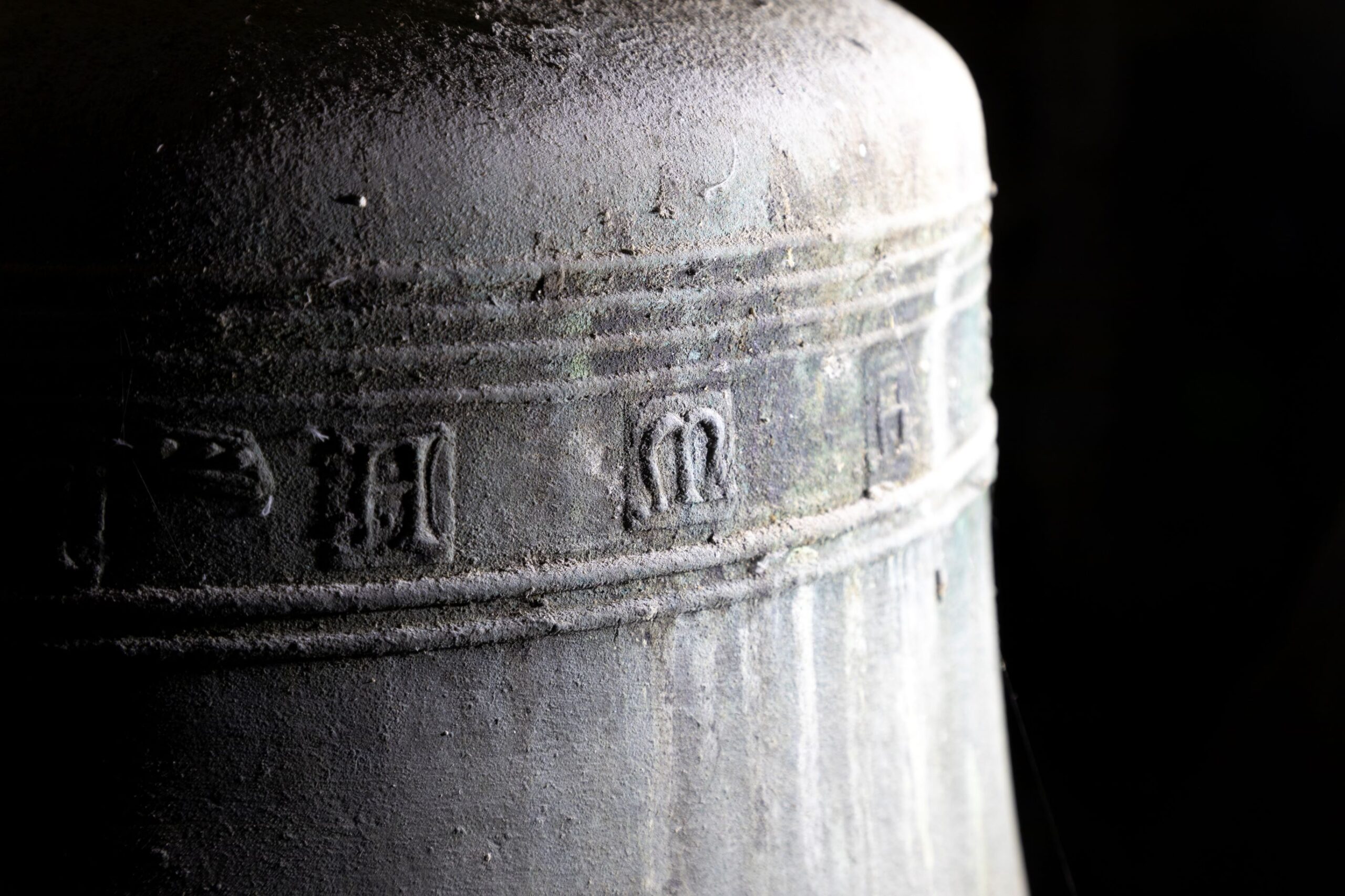
The sound of church bells has been deeply woven into the fabric of our everyday lives for hundreds of years. Bells call people to services and to make confession, announce feast days and holy days, peal for newlyweds, ring for joy at the end of wars, and toll for souls departed. There’s long been a tradition of naming church bells, and bells were usually baptised as well! Our bells are occasionally rung by local volunteers, for example to mark events of national importance ... and at our Annual Evensong and AGM.
Many bells bear inscriptions, some sacred or poetic, and others record the names of local landowners or church wardens. The bell-founder often also left their name or mark. But the age and maker of many anonymous bells are still the subject of ongoing study and debate.
Although over the centuries some bells have been lost from our churches, we are fortunate to have many fascinating historic bells cast from the medieval period up to the early 20th century.
“Small though the building is, it ranks highest in the county to those interested in campanology.”1
This petite church in the ‘parish of the alders’ dates from the 13th century. Its bellcote houses two bells that date from the first quarter of that century. The pair of ‘round-shouldered’ and ‘long-waisted’ bells were cast by the same maker. Although they are uninscribed, Arthur Wright (The Church Bells of Monmouthshire) considered them to be ‘two of the earliest and most interesting bells in the county’. Indeed, some historians believe them to be the oldest in Monmouthshire.
The medieval bellcote was reconstructed as part of the church’s restoration by J P Seddon in the mid-19th century.

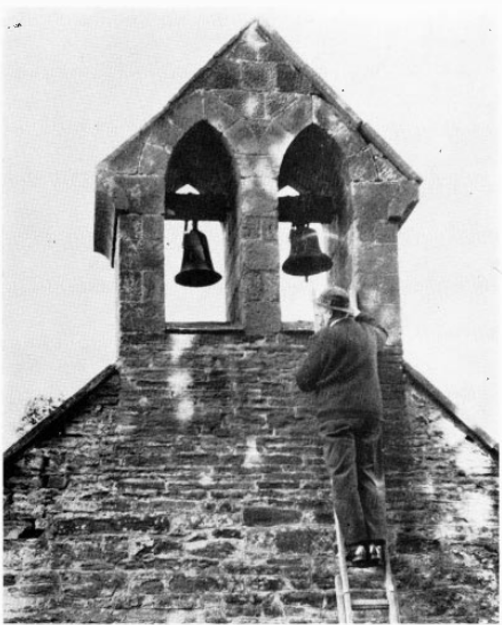
Frederick Sharpe examining the bells at Llancillo (1960s/70s); Photo: George Cousins (from Fred Sharpe’s Church Bells of Herefordshire, by kind permission of the Sharpe Trust).
St Peter’s has two bells. The older, long and slender, is believed to date from the late 13th century but may even have been cast as early as 1175 and is said to be the oldest in Herefordshire. The maker is unknown. However, ‘The similarity of the ancient bells at Brockhampton, Dulas, Gwernesney, Llancillo and Llangiwa and the proximity of these churches to the Abbey of Llanthony in the Black Mountains suggest that they might have been cast there. Bellfounding was largely practiced in monasteries at this period.’ 2
The other bell was cast by Evan (the Elder) & William Evans of Chepstow in 1725. It bears the abbreviated name of the churchwarden, Thomas Howe. The church’s timber bell turret was replaced by the present stone bellcote in about 1850.
Most of the fabric of this medieval country church dates from the 13th-15th centuries. Its three bells, a full-circle ring, were cast between the 14th-16th centuries:
The treble — inscribed in black letters, Vox Augustini Sonet In Aure Dei (Augustine’s voice rings in the ears of God) — was probably cast in the 15th century by Robert Chamberlain.
The second, an early 16th-century bell, is inscribed in black letters, Sancta maria ora p[ro] nobis (Holy Mary, pray for us).
And the tenor — inscribed in gothic lettering, Vocor Johannes (My name is John) — is the oldest; it was probably cast in the late 14th century by William Rufford.
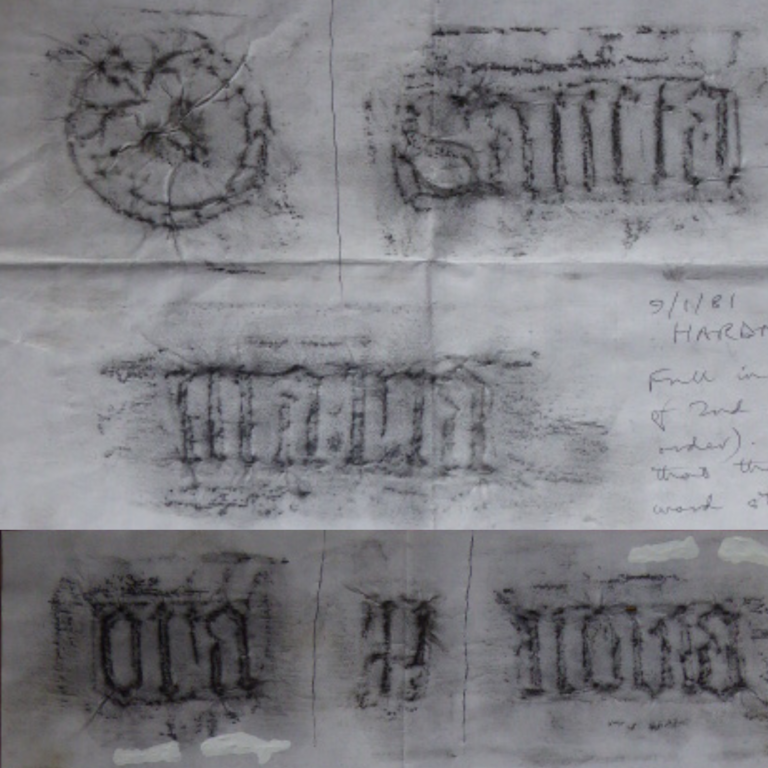
Christopher Dalton’s rubbings of the inscription SANCTA MARIA ORA P NOBIS (1970)
The tapering five-level crenellated tower of St Lawrence's, built in the 15th century, is topped with a belfry. Below the bellcote, the tower’s fourth level was designed to be a dovecote.
The hefty bell, weighing 200 kg (440 lb), is believed to have been made in Bristol in the 14th century —making it older than the tower, and possibly the oldest in Pembrokeshire. It’s very similar to two bells at Angle that were made in about 1380. A picture of Gumfreston's bell is featured at the top of this Story.
A visit by The British Archaeological Association in 1884 provided this enthusiastic description:
'High up in this lofty and weird tower hangs an ancient, solitary bell, as beautiful in form, and decorated with letters as artistic in their treatment as any that ever left mediaval foundry. Each letter is stamped on a separate patera, as was usual with early inscriptions; and all are spaced at slight intervals apart, with an initial cross at the commencement. There is no date, and the legend reads, “Sancta Maria ora pro nobis”.’3 (Holy Mary pray for us)
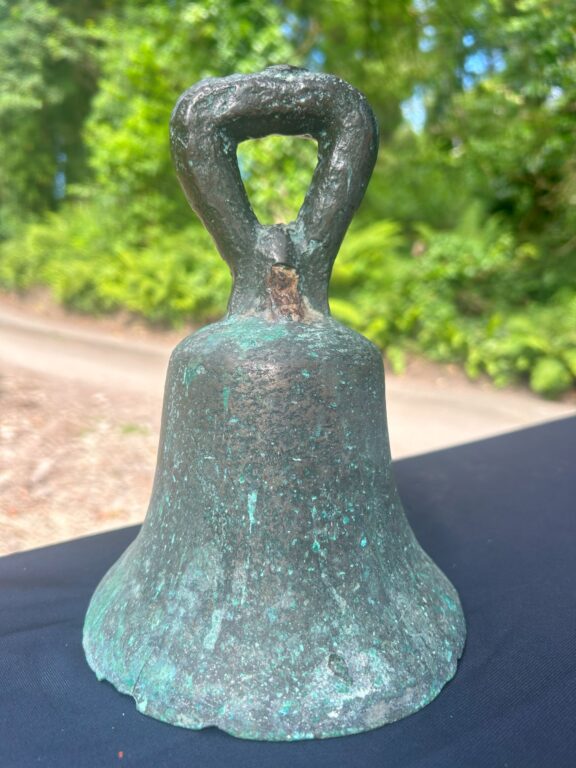
Gumfreston’s sanctus bell
Gumfreston also has another remarkable survivor: a heavy bronze sanctus bell (handbell) that has been dated to the 16th or 17th century. Legend has it that the bell’s cracked condition is the result of an exorcism that took place in the church with bell, book and candle; during the rite, an angry spirit appeared suddenly in a flash and lashed out at the bell.
Manordeifi’s old church is dedicated to St David and stands on the site of an early medieval church dedicated to St Llawddog. However, the inscription on the single bell now hanging in the medieval open bell turret is llanci Ora Pro Nobis (St Lawrence pray for us).
In October 2023 this 15th-century bell was rung by our Trustee, Rev. Alex Barrow, as members arrived for our members' evensong and Annual General Meeting.

On the eerie Dengie Peninsula, the two-story Tudor weather-boarded bell tower of St Mary’s, with its charming timber ‘skirt’, contains a single bell that was made in about 1400 by the bell-founder John Langhorne. The bell must have been known as 'Vincent', because Gothic letters spell out an inscription: Vincentius Reboat Ut Cuncta Noxia Tollat (Vincent resounds so as to drive away all harmful things).
Another bell by John Langhorne of a similar date used to hang in St Lawrence and All Saints’, Steeple-with-Stangate, Essex, and is now in the collection of the V&A. It’s inscribed Sca Juliana (referring to St Juliana of Cumae, Italy).
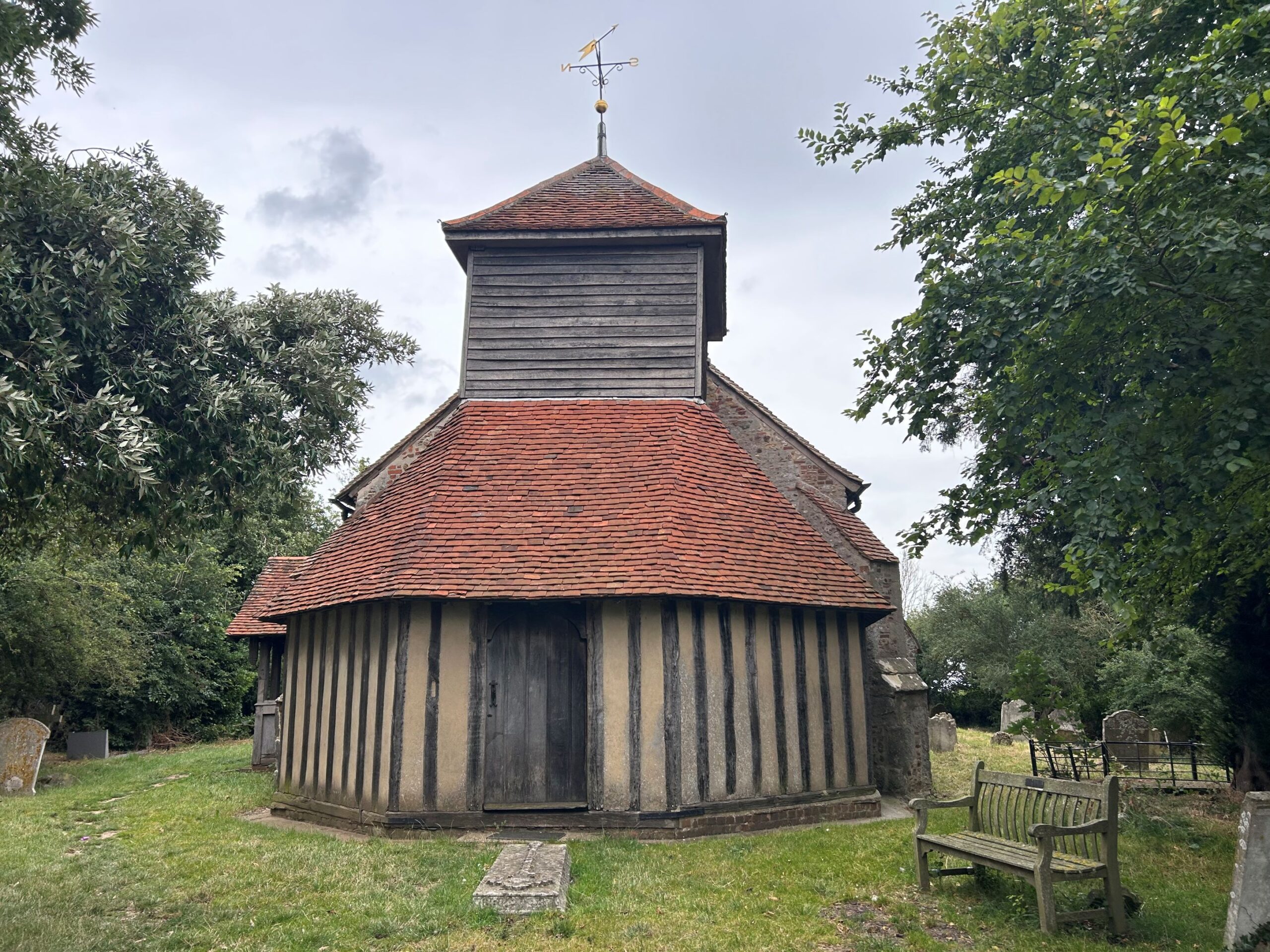
Most visitors to this 13th-century church come to see the broken but beautiful effigy tombs of John and Anna Martel, who died in about 1270, but the church also has a rare 15th-century bell, inscribed to St Michael and attributed to Robert Hendley of Gloucester. Hendley produced bells from about 1450-1500, which he shipped to places all along the river Severn, from the south-west to the west midlands. Hendley’s mark was a cross ‘of a peculiar variety, having three of its arms ending in trefoils, and the fourth terminating in a kind of knob.'4

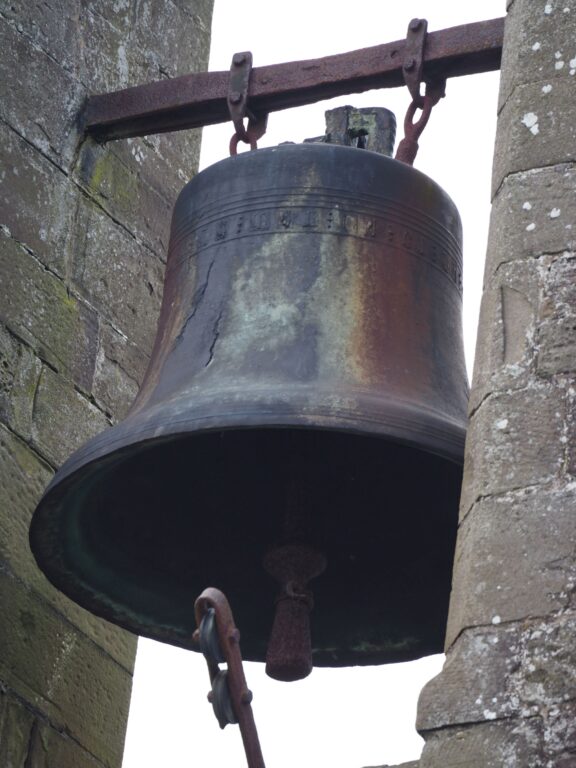
Kenderchurch © Chris Pickford
We adopted this medieval hilltop church in early 2024 and are currently carrying out substantial repairs. In April, bell historian Christopher Pickford visited the church with a telescopic camera to investigate the large bell in the west bellcote.
Chris’s analysis of the inscription revealed that the bell was dedicated to St Margaret (rather than St Mary) and cast by ‘IS of Gloucester’. IS is an unknown founder, thought to be the predecessor or successor of Hendley (who cast Llanfihangel Rogiet’s bell). It would have been cast in about 1500, though exact dates for this founder are uncertain. We are thrilled to learn more about the ‘newest’ church bell to come into our care.
The Ayshford family owned the estate at Ayshford (in Burlescombe parish) since at least the 12th century, and built this private chapel in the 15th century. The Ayshford name can be seen on monuments in the chapel, and also on the single bell in the turret, which is inscribed with the words THIS BELL IS HENRY AISHFORDS ESQVIRE T P 1639. Henry Ayshford (1576-1650) was appointed Sheriff of Devon in 1632, was a Lt. Col. In Colonel Francis Courtnays Regiment in 1633, and Deputy Lt. of the County in 1638/9. Although a ‘reluctant cavalier’ during the Civil War, he was heavily fined by the victorious Parliamentarians for his loyalty to the crown. The T P in the inscription is for the maker, Thomas Pennington (the Younger) of Exeter. It’s thought that he originally cast it as a house bell for Ayshford Manor. (conversely, at Long Crichel in Dorset, one of the church’s 17th-century bells was ‘purloined’ by the local squire and installed as the clock bell at Moor Crichel House).
In 2022, Ayshford Chapel’s bell was repaired after at least a hundred years of silence. Volunteers reattached the clapper, which had fallen off and rested on a stone mantle below, and fashioned a new arm with rope attached, which connects to the pivoted headstock. When the bell was rung for the Queen’s Platinum Jubilee that summer, it could be heard by people walking along the Grand Western Canal!

This medieval chapel was largely rebuilt in 1770, but its bell is dated 1693/5 and was possibly made by Peter Wood, a second-generation founder at Thirsk, just six miles from Thornton le Beans. If so, it’s his lightest known bell.
Thanks to Victorian ingenuity, the chapel’s bellcote is also the exit for the flue for the (long-removed) stove at the west end.
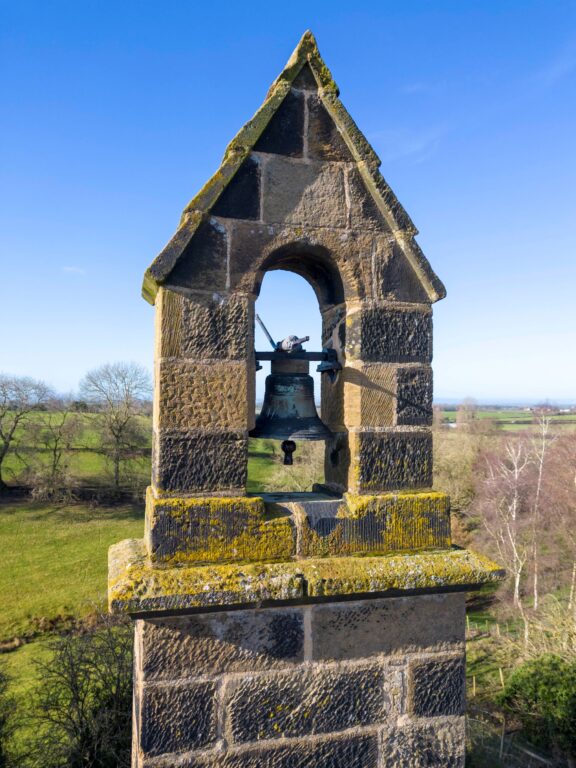
Thornton le Beans
St Cadoc's is one of three FoFC churches to have ringing bells (the others are Long Crichel and Wood Walton). Evan Evans the Elder of Chepstow cast a ring of five or six bells in 1707 (he also made one of the bells at Llancillo). The treble was cast by John Rudhall of Gloucester in 1812, but this might have been recast from an earlier bell.
In 1858, John Allan Rolls (who would become the first Baron Llangattock) replaced one of Evans’ bells with one by John Warner & Sons, on which the original inscription, PROSPERITY TO ALL THAT LOVES GOOD BELLS, was reproduced. Warners, an engineering company producing a wide range of goods and machinery, was in business for 210 years (1739-1949). Their bells and clock chimes can be found throughout the world, including the UK Houses of Parliament.
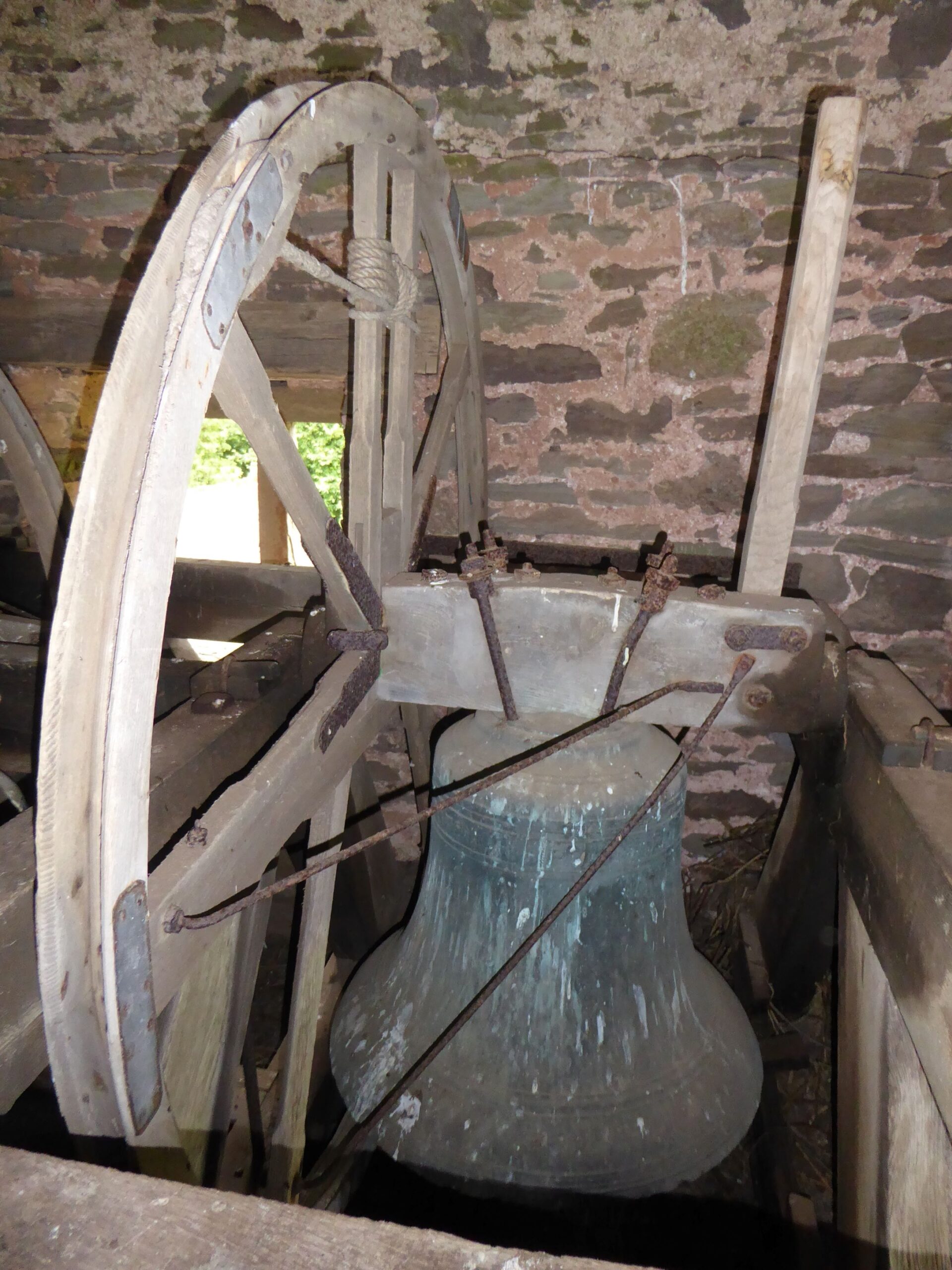
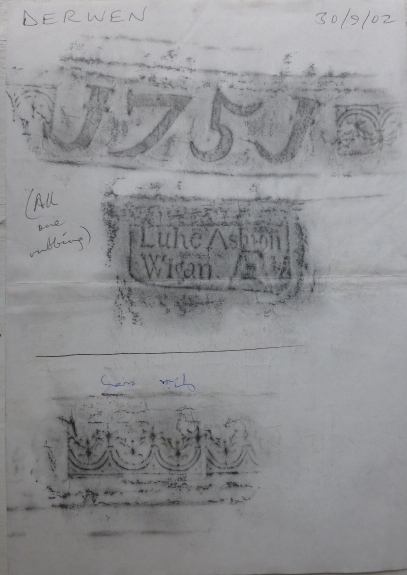
Christopher Dalton’s rubbings from Derwen (2002)
St Mary’s has two bells; one is medieval (perhaps C14th) but uninscribed, and the other is engraved by the founder, Luke Ashton of Wigan, with a date of 1751 and an arabesque border.
Once upon a time, bell foundries were an important industry in Wigan, and the Ashton family cast a variety of bells and other metal products, including church bells, apothecary’s mortars, house bells and gongs.
St Andrew’s four bells were detailed in The Church Bells of Huntingdonshire (1899) by Rev. Theodore Montague Nugent Owen (1844-1913). Rev. Owen was not only an accomplished campanologist, but also the Rector of Wood Walton from 1887 to 1907.
Two of the bells were cast by Joseph Eayre in 1764; the others date from 1841 (maker unknown). Rev. Owen described how the bells at Wood Walton were rung for different types of services and festival days. For example, peals were rung on Christmas Eve. The bells also tolled when there was a death in the parish. He states ‘At the death knell, rung as soon as possible after notice given, 3 x 3 for a man, 3 x 2 for a woman and 3 x 1 for a child are given, before and after the knell.’
Thomas Hardy wrote movingly about hearing a death knell in his poem, 'Drawing Details in an Old Church'.
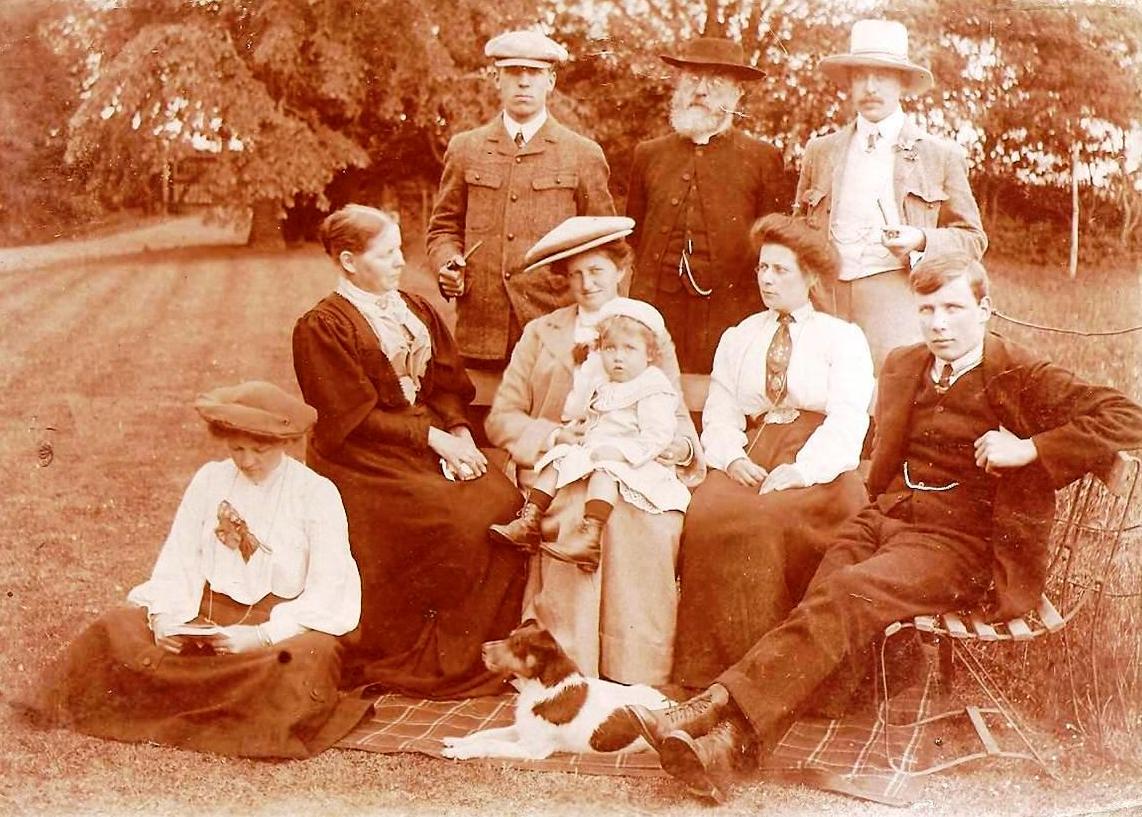
The three bells at St Jerome’s, all cast by John Pennington II of Monmouth in 1677, have delightful inscriptions:
FEARE GOD HONNOVER [honour] THE KING DO WELL AND DOOVT NOTHING
JOHN GWIN ESQV AND THOMAS GEORGE C W DENS
HEARE I AM CAST SAFE AND SOVND TO CALL THE DEAD INTO THE GROUND
The John Gwin named as a churchwarden was probably John Gwin III, who was born circa 1610-1620 and died in the 1680s. Gwin’s fascinating commonplace book, now in Monmouthshire Record Office, has recently been transcribed and published. Read more about it here.

This Arts and Crafts private chapel was built at the turn of the 20th century, per a bequest from Mary Barton in memory of her husband and son. The small church has two bells, one at each end of the church: On the west gable, there's a timber-gabled bellcote on brackets, and on the east gable, there’s a spirelet with an octagonal bell-turret guarded by griffin gargoyles.
The bell in the spirelet was made in 1903 by Llewellins & James. This bell foundry and engineering company was founded in 1854 by Peter Llewellin and J W James, but the Llewellin foundry business had its genesis in the 18th century. As well as bells, they cast numerous products in brass, bronze and iron and also developed several patented machines and devices. Their advertisements in newspapers promoted ‘church bells cast on scientific principles’.
The bell and bellcote at the west end were given to the church in 1910 by Mr Henry Theodore Cookson and Mrs Adalina Olivia Cookson of Sturford Mead. The same year, this generous couple also gave the new church its organ.
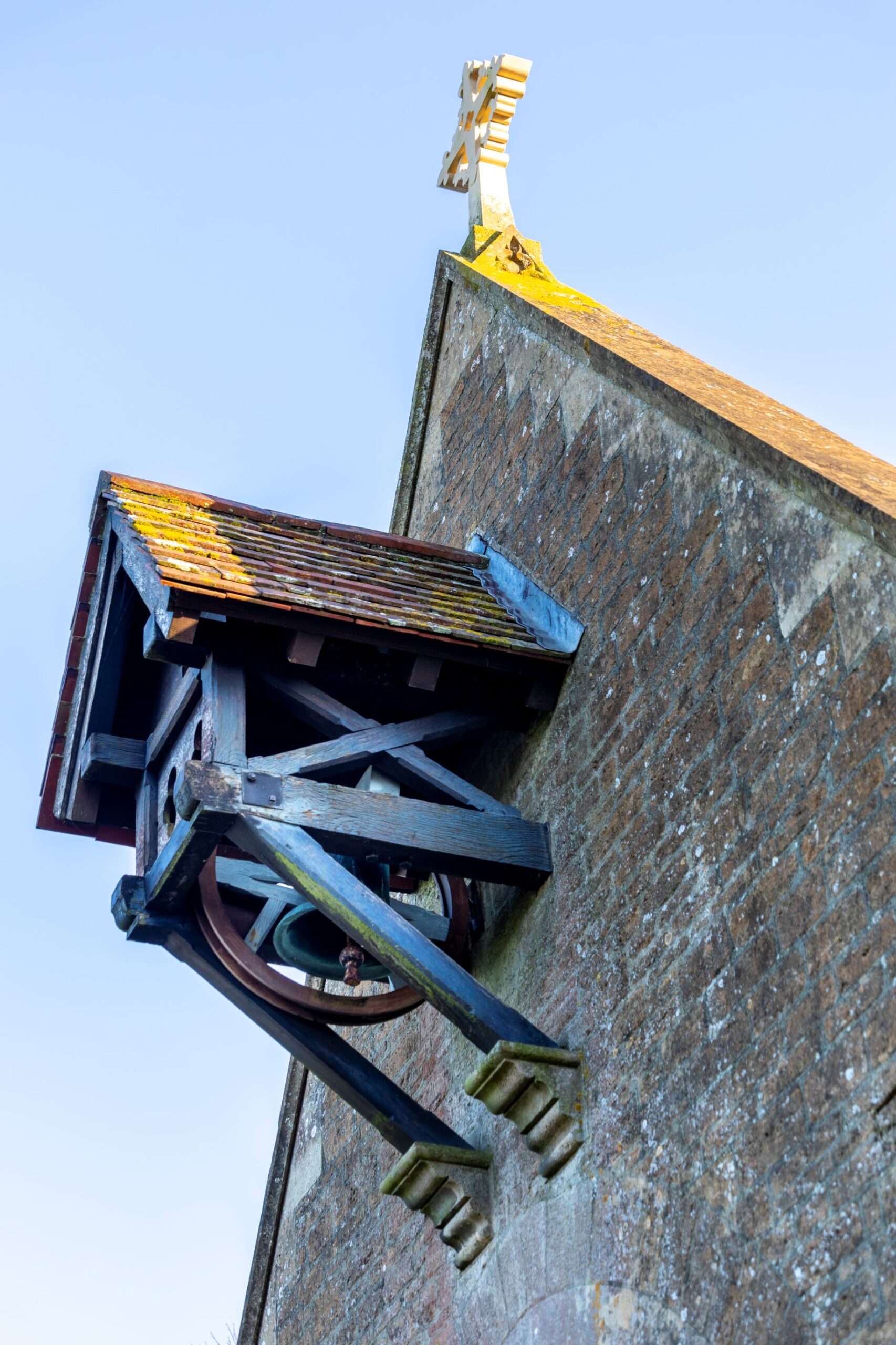
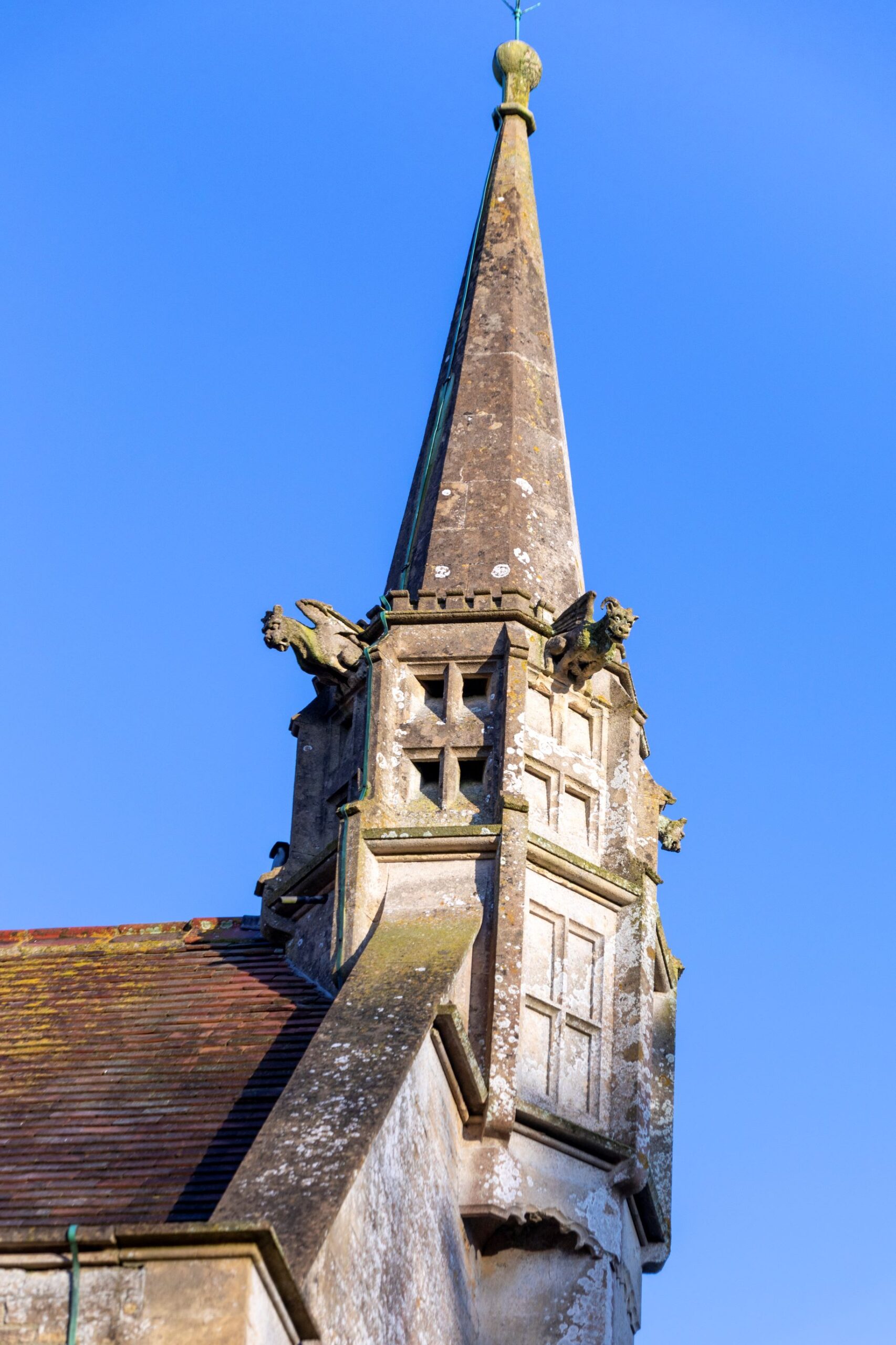
Caerdeon chapel was designed by the architectural writer and artist, Rev. John Louis Petit, in 1862. It’s a very unusual building, with a rugged Mediterranean or Alpine character, and it’s no surprise that the bellcote is unusual too. In fact, it’s a bellcote-cum-chimney, divided into four sections. There’s a row of four bells that are rung by a special mechanism — a large wheel found in a shelter on the north side of the church operates a single rope pulley, which enables all the bells to be rung by a single ringer. According to bell historian Chris Pickford, ‘The interest is in the unusual chiming system, which may well be unique. … the ringing mechanism is an original feature [of the church] and the whole thing may well have been conceived by Petit himself.’5
Caerdeon’s bells were produced at London’s famous Whitechapel bell foundry, by G Mears & Co, costing £53.12.10, including all fittings. Just three years earlier, they had cast the foundry’s largest ever bell – the Great Bell that would become known as ‘Big Ben’.
An 1886 travel writer described ‘Caerdeon church, with its tower of musical bells, which he can hear far away, down to Barmouth’. For many years these tinkling bells were rung by mountaineer Bill Tilman, who lived nearby. Tilman was no stranger to ropes, having scaled some of the world's highest mountains, including Everest, and sailed some of its most treacherous seas.
Read more about Tilman in The Daring Mountaineers of Derwen and Caerdeon.
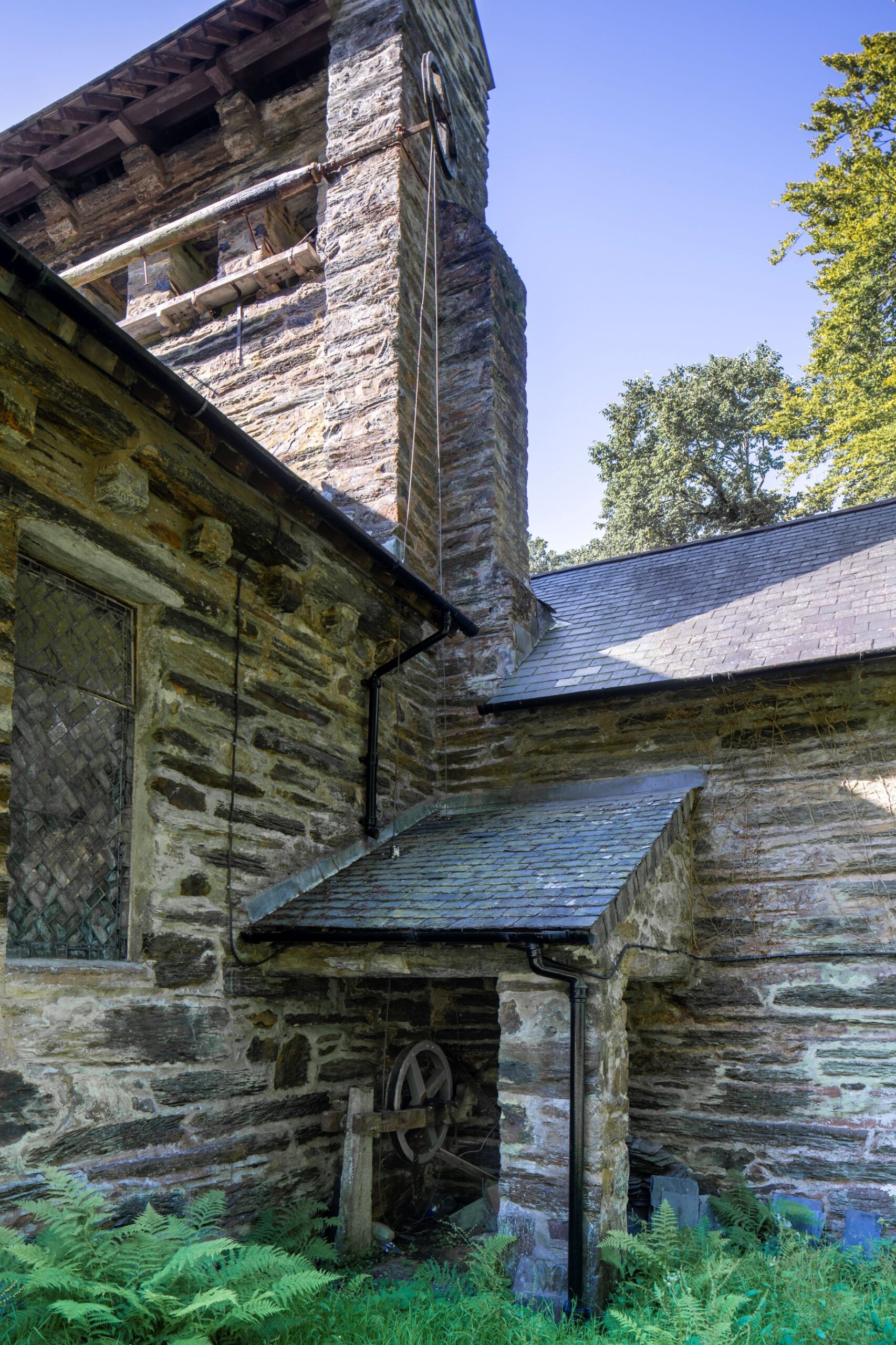


These are just some of the many historic bells in our churches. We hope you've found the article 'appealing'! If you'd like to explore more about church bells, here are a few suggestions:
Recommended reading & resources
Our sincere thanks to bell historian Christopher J Pickford FSA, for not only generously sharing his extensive expertise and image collection with us, but even donning his wellies to walk through muddy fields so he could photograph and analyse our church bells!
References for quotations:
For sources of any other details in this article please contact clare.kirk@fofc.org.uk.